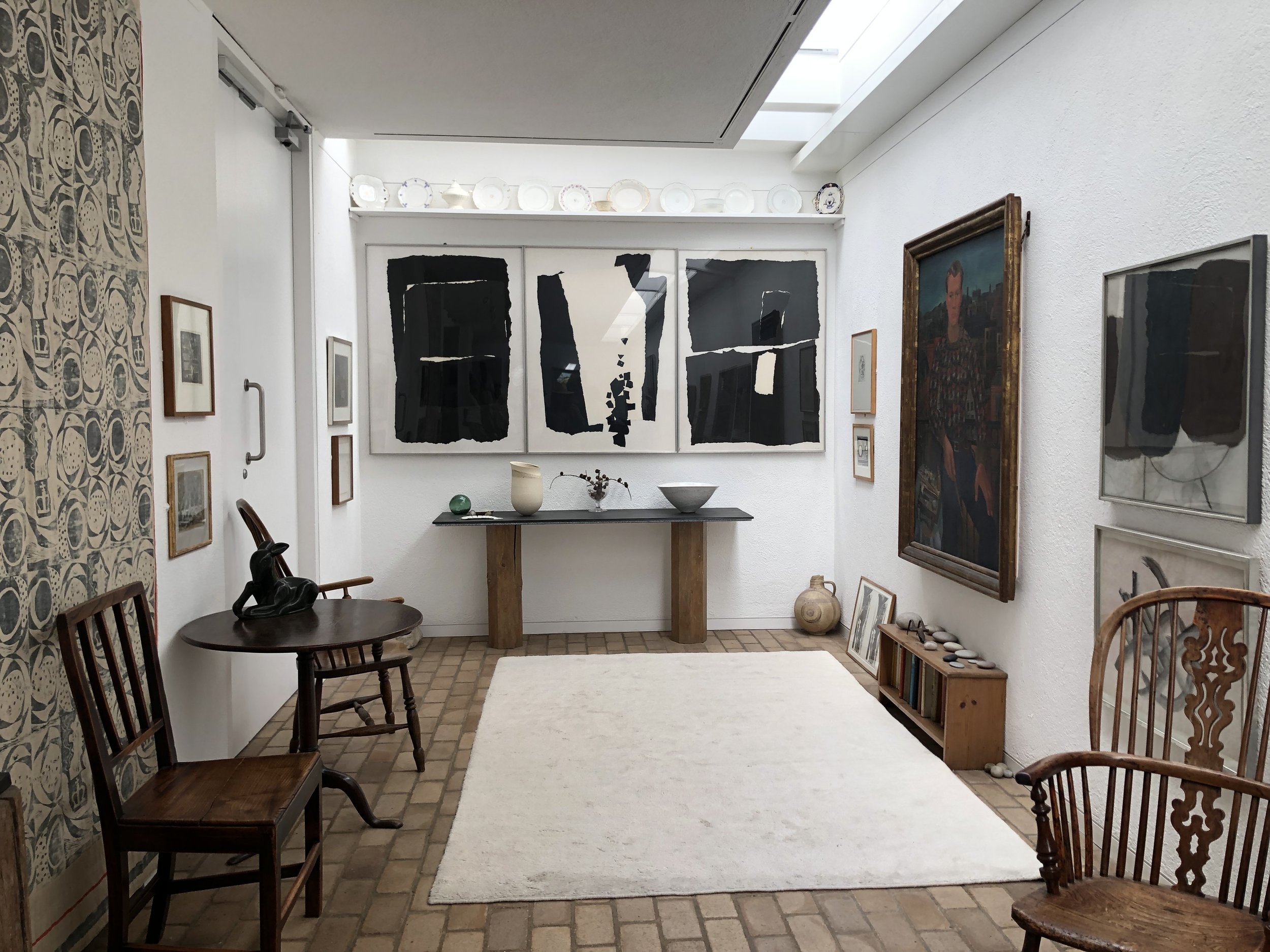Living with Art: How Kettle’s Yard Inspired Roshi Home Gallery
I still remember the first time I visited Kettle’s Yard in Cambridge. It wasn’t just the art on the walls or the objects on display that moved me—it was the way the space felt alive. Kettle’s Yard wasn’t a traditional gallery. It was a home, and yet it was so much more. The spirit of its founders, Jim and Helen Ede, lingered in every corner, whispering a philosophy that resonated deeply with me: art belongs in life, not apart from it.
Jim Ede’s vision was simple yet profound. As a former curator at the Tate, he knew the power of art, but he also understood its potential to feel distant, locked behind glass or hung on pristine white walls. When he and his wife turned four cottages into Kettle’s Yard in the 1950s, they created a space where art could be lived with—where a painting above a sofa or a carefully placed stone on a table felt like they were meant to be there, part of the rhythm of daily life.
The sofa at Kettle’s Yard stayed with me long after I left. It wasn’t just a piece of furniture; it was an invitation. A place for conversations, quiet contemplation, or simply being present. It’s a simplicity I’ve tried to recreate in my own work, particularly with the Roshi home gallery concept. At Roshi, the sofa is central, not just as an object but as a space for gathering, sharing, and connecting—just as it was at Kettle’s Yard.
What struck me most about Kettle’s Yard was its intimacy. Jim and Helen opened their doors to visitors every afternoon, welcoming them like friends into their home. The living room often doubled as a performance space, where music, art, and conversation blended seamlessly. This idea—that a home could be a salon, a gallery, a stage—was transformative for me. It showed me that art isn’t something to be separated from life but something that enriches it when it becomes part of the everyday.
When I think about Roshi.co, I think about Kettle’s Yard. The idea of creating a space where art, design, and life intersect isn’t new, but it’s timeless. Like Jim and Helen, I want to create environments that feel personal, where art isn’t just observed but lived with. Kettle’s Yard reminded me that the most meaningful spaces are those that reflect the people who inhabit them, their stories, and their passions.
Every time I think back to that first visit, I’m reminded of why I do what I do. Kettle’s Yard wasn’t just an inspiration for Roshi home gallery—it was a reminder of what a home can be. A place where art and life flow together, creating something beautiful, personal, and alive.












